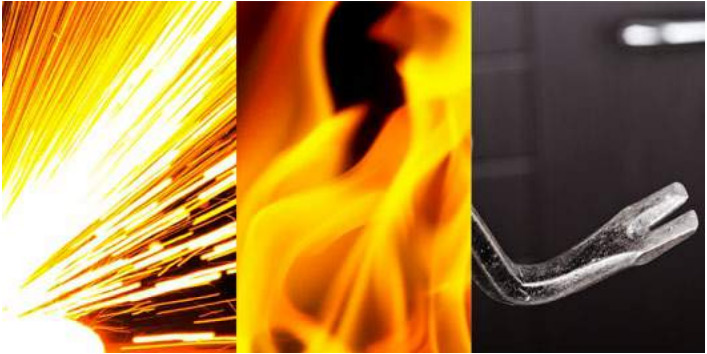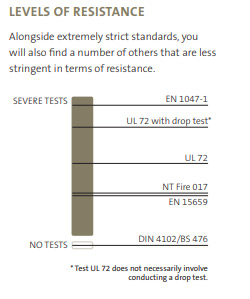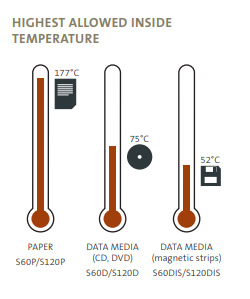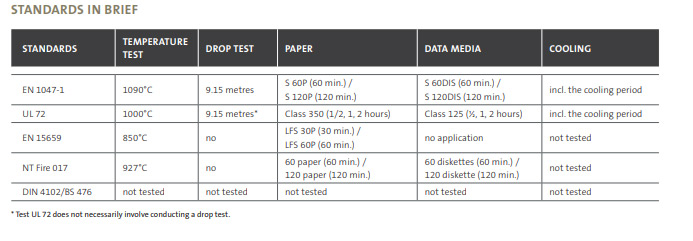Choosing a Safe
WHICH SAFE IS RIGHT FOR YOU?
The most important initial question is what you want to protect – cash and valuables, documents or data media?
CASH AND VALUABLES
Choose from the burglary protection range. This includes safes, cabinets, vaults & vault doors, designed to withstand physical attacks in different strengths or Grades. Each Grade represents a particular “cash rating” which is the amount an insurer will cover*.
* The actual amount of cover can vary between insurance companies and country, and may be different to the manufacturer’s recommended rating. You should always check what cover your insurance company is prepared to offer.
DOCUMENTS AND DATA MEDIA
Choose from the fire protection range which includes safes and filing cabinets designed to keep documents or data media safe from the effects of a fire.
DOCUMENTS
To survive a fire, documents require protection from temperatures higher than 177°C. Therefore cabinets have to be specifically designed, tested and then certified for this task. Without a credible certification, you cannot be sure that your documents are safe.
DATA MEDIA
The same is valid for data media, except here the cabinet must offer much greater protection due to the sensitivity of the material. If the inside of the cabinet exceeds a mere 55°C, then the information on a CD, DVD or tape will be destroyed.
 CERTIFIED STRENGTH
CERTIFIED STRENGTH
To provide the appropriate level of protection, the products are tested to comply with the latest industry standards. The various certification tests carried out in independent laboratories for burglary or fire protection are conducted by experienced operators armed with plans of the product and a whole range of tools.
FOR BURGLARY PROTECTION, safes and vaults are awarded grades:
- For security cabinets, there are Grades S1 and S2 (EN 11450).
- For safes, vaults and vault doors, they are rated from Grade 0 to Grade XIII (EN 1143-1) and from class TL-15 to class 3 (UL 687 and UL 608).
- High security locks are graded according to EN 1300 or UL 1034 and security doors sets, windows and partitions are ranked from RC1 to RC6 (EN 1127).
During the certification process, door panels of the products, bolt works, locks and handles are tested. The certification tests include an attack program that is devised so that various break-in attempts can be made using a selection of tools. A correlation between tool type and the time for which each one is used can be used to obtain a resistance score (resistance unit). The higher the score, the higher the level of resistance. Based on the results obtained, the safe is given a classification and then listed in a resistance grade
FOR FIRE PROTECTION, these standards vary according to whether you want to protect paper documents, digital media or other highly sensitive objects. This is because the temperature at which data media (e.g. 52°C) and documents (e.g. 177°C) deteriorate differs according to the item protected:
- In order to fully protect data media, industry standards indicate that products should carry ECB S EN 1047-1, UL 72 Class 125 or NT Fire 017 60/120 DIS.
The ECB S and UL tests monitor the internal temperature of the data cabinet until it has completely cooled down during the “soakout” period. Assessing products during this period is essential, since internal temperatures can peak up to six to eight hours after a fire has been extinguished. Such tests ensure that all products are comprehensively tested and, upon passing, will fully protect your data media for the specific time period stated.
- For document protection, all products must have an appropriate industry standard 30- or 60-minute paper certificate.
UL72-Class 350, ECB S EN 1047-1, EN 15659 or NT Fire 017 are acceptable standards for paper document protection.




